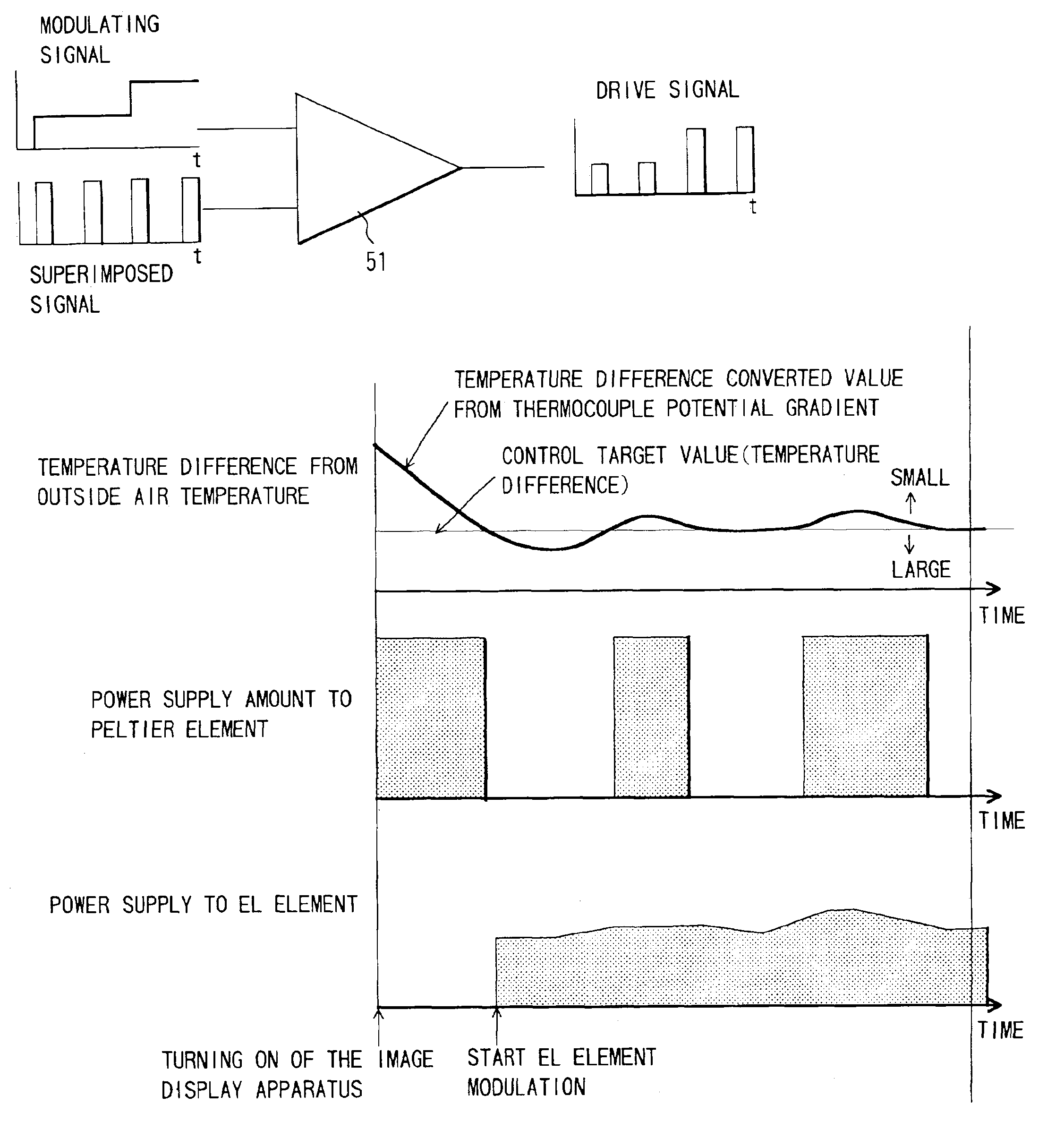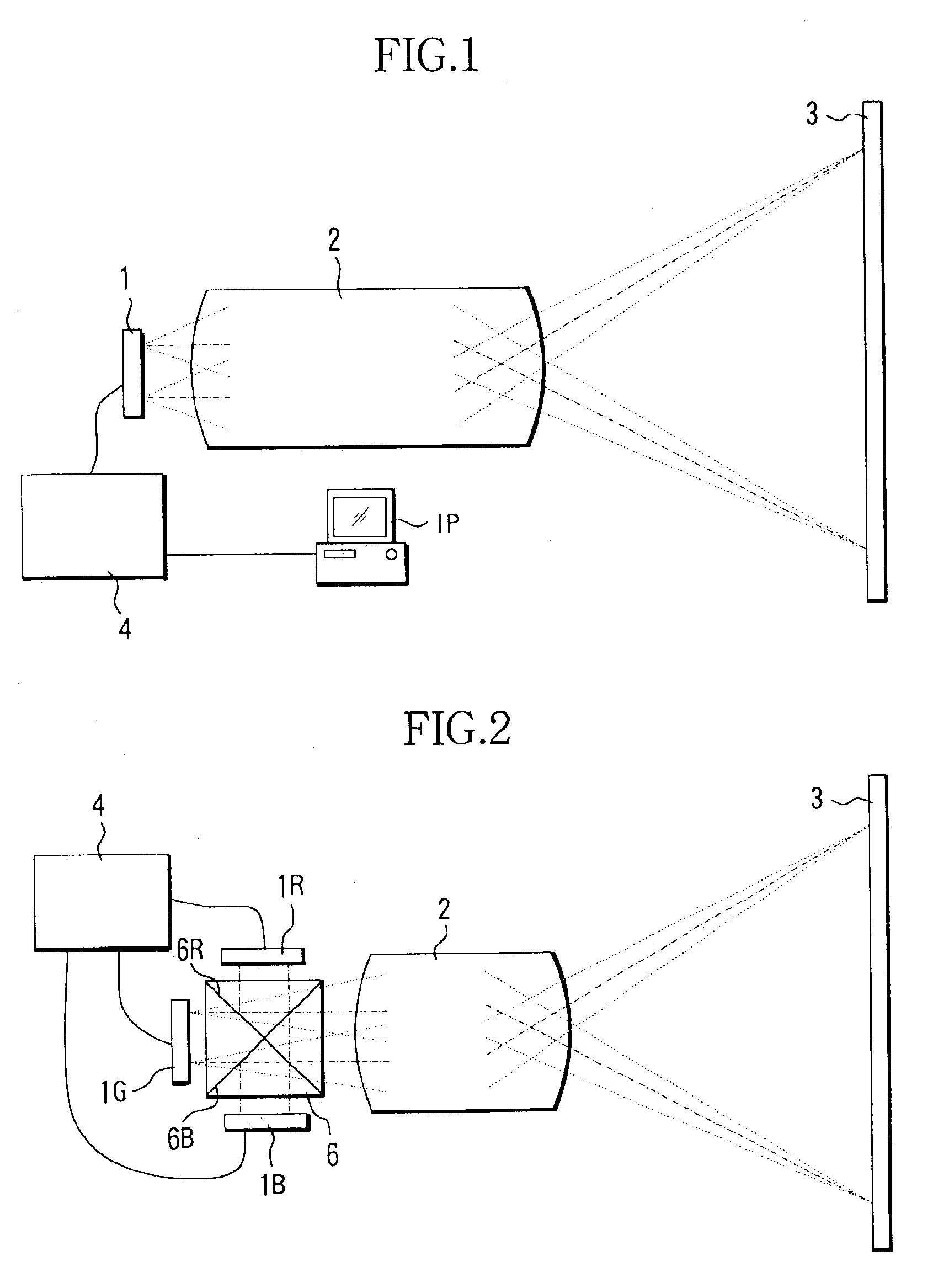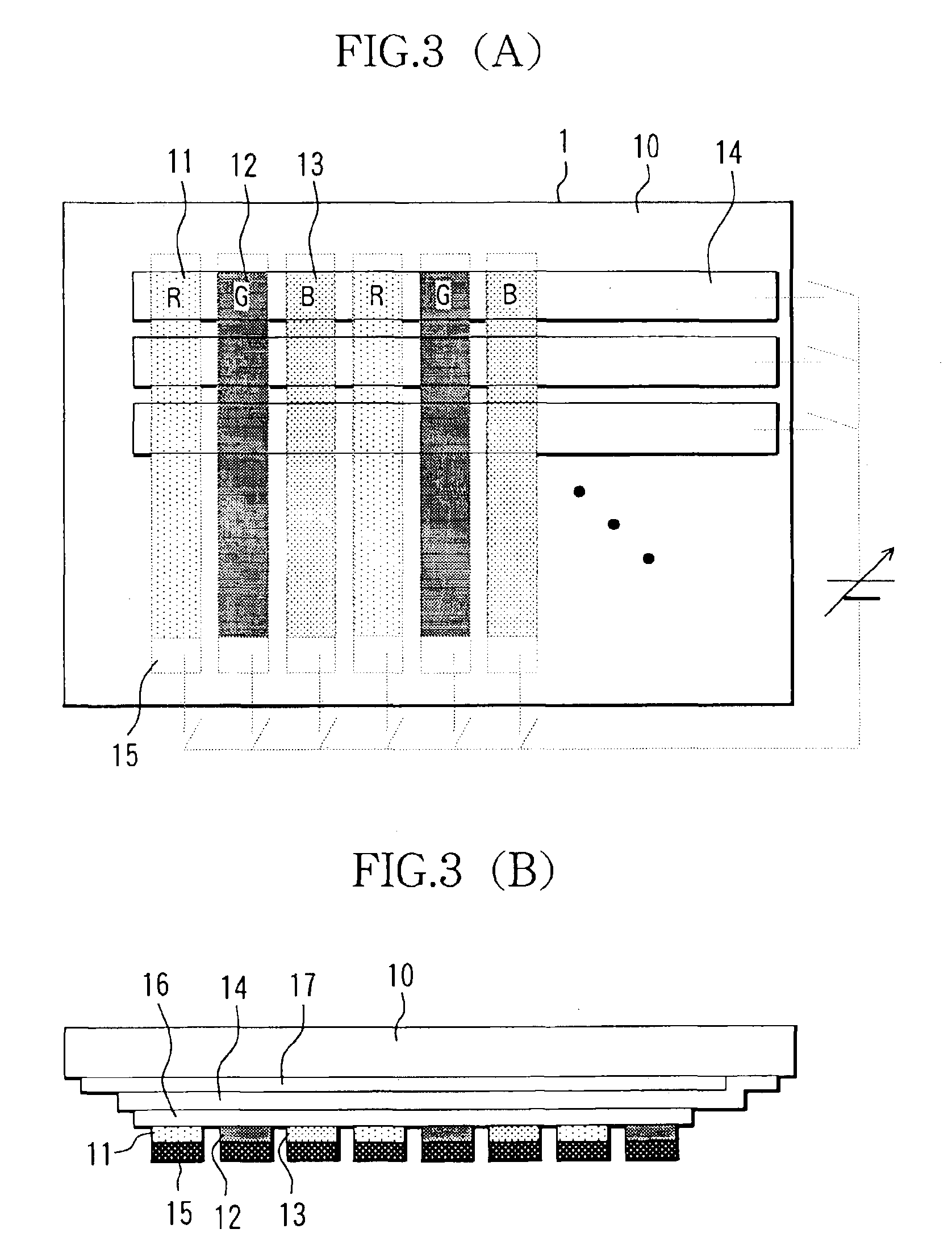Projection type image display apparatus and image display system
a projection type and image display technology, applied in the field of projection type image display apparatus, can solve the problems of difficult to efficiently use the pupil of an axially symmetric optical system, large reduction of luminance, and high heat generation of light sources, so as to reduce the flickering of projected images and the amplitude of power supply capacity, the effect of suppressing the deterioration of the luminous efficiency of organic el elements
- Summary
- Abstract
- Description
- Claims
- Application Information
AI Technical Summary
Benefits of technology
Problems solved by technology
Method used
Image
Examples
embodiment 1
[0042
[0043]FIG. 1 is a sectional view of a main optical system forming a projector (projection type image display apparatus) of Embodiment 1 of the present invention.
[0044]An EL element 1 emits light including image information. This EL element 1 comprises a plurality of pixels which emit image information as emission pattern information.
[0045]A controller 4 comprises a CPU, etc., which electrically controls the EL element 1 in response to image signals from an image signal providing apparatus IP such as a personal computer, a DVD player, a VCR, a video camera, a television, or a unit of an antenna to receive image signal and a tuner (the same applies to the next Embodiment 2 although it is not shown). The EL element 1 emits light based on electrical signals from the controller 4.
[0046]Light emitted from the EL element 1 is projected onto a screen 3 by a projection lens 2. The screen 3 has light diffusibility on its surface, and an observer recognizes an image by viewing the light d...
embodiment 2
[0047
[0048]FIG. 2 is a sectional view of a main optical system forming a projector (projection type image display apparatus) of Embodiment 2 of the present invention.
[0049]EL elements 1R, 1G, and 1B emit light in colors administering the three additive primary colors of red, green, and blue. Each of these EL elements 1R, 1G, and 1B comprises a plurality of pixels which emit image information as light emission pattern information.
[0050]A controller 4 transmits electrical signals to the EL elements 1R, 1G, and 1B in response to inputted image signals from the image signal providing apparatus (denoted by IP in Embodiment 1) to control these EL elements 1R, 1G, and 1B. Based on electrical signals from the controller 4, each of the EL elements 1R, 1G, and 1B emits light in a color that the corresponding EL element handles.
[0051]Light emitted from the EL element 1 is color-combined by a wavelength-combining prism (color-combining prism) 6. The wavelength-combining prism 6 is generally cal...
embodiment 3
[0088
[0089]FIG. 9 shows a main optical system forming a projector (projection type image display apparatus) of Embodiment 3 of the present invention.
[0090]In this figure, an electroluminescence (EL) element 101 emits light containing image information. This EL element 101 comprises a plurality of pixels which emit light so as to express image information as light emission pattern information.
[0091]The EL element 101 is electrically controlled based on electrical signals from a display controller 154. Image signals are inputted into the display controller 154 from an image signal providing apparatus IP such as a personal computer, a DVD player, a VCR, a video camera, a television, or a unit of an antenna to receive image signal and a tuner. The controller 154 provides electrical signals for making the EL element 101 to carry out emission based on inputted image signals and to display an image to the EL element 101 (the same applies to the next Embodiment 4 although it is not shown). ...
PUM
| Property | Measurement | Unit |
|---|---|---|
| humidity | aaaaa | aaaaa |
| temperature | aaaaa | aaaaa |
| thickness | aaaaa | aaaaa |
Abstract
Description
Claims
Application Information
 Login to View More
Login to View More - R&D
- Intellectual Property
- Life Sciences
- Materials
- Tech Scout
- Unparalleled Data Quality
- Higher Quality Content
- 60% Fewer Hallucinations
Browse by: Latest US Patents, China's latest patents, Technical Efficacy Thesaurus, Application Domain, Technology Topic, Popular Technical Reports.
© 2025 PatSnap. All rights reserved.Legal|Privacy policy|Modern Slavery Act Transparency Statement|Sitemap|About US| Contact US: help@patsnap.com



